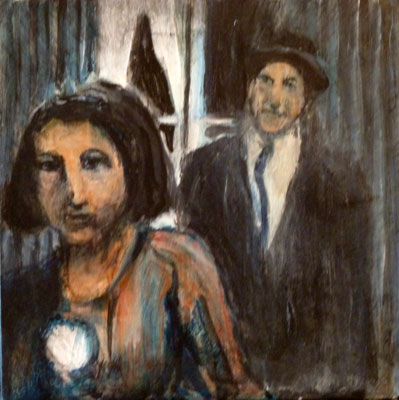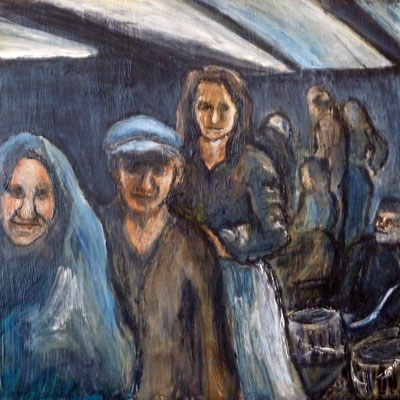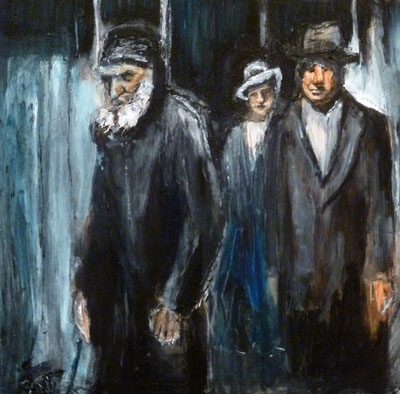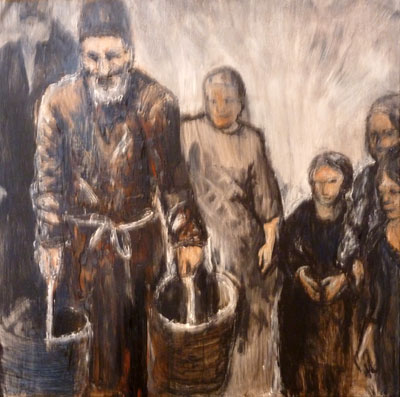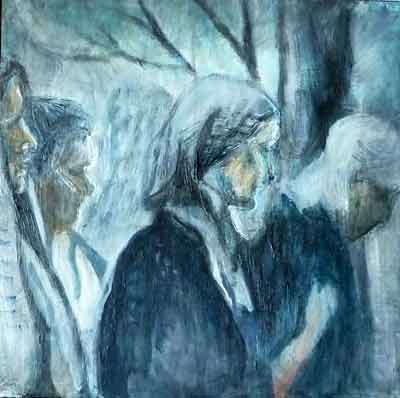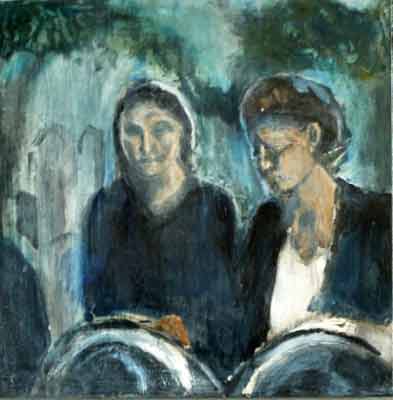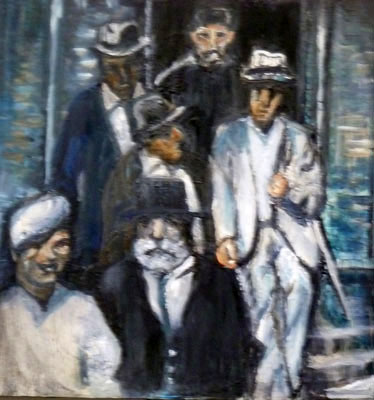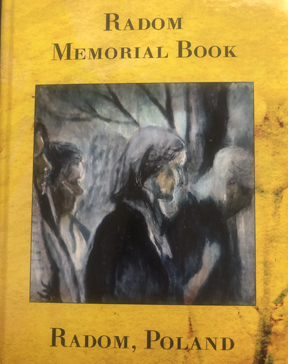|
Welcome
This
web site is dedicated to the
study of Jewish family
history in the town of Radom,
Poland.
Location:
51°
25' 21° 09'
Other Names: Radom (Pol,
Rus), Rodem, Rudem
Nearest Large Cities: 93.2
kilometers (58 miles) S of Warsaw
The
Book of Radom: The Story of a
Jewish Community in Poland
Destroyed by the Nazis has been
translated in full from the original
Yiddish and is available for purchase from JewishGen. A
special thanks to Anita Gabbay who
managed this translation.
|
Events
in Radom
A Commemoration
of the
liquidation of
the Radom
Ghetto
occurred in
August 2017.
At that time a
trail
was
established
that
identifies the
locations of
significance
to the Jewish
community. Learn
more about the
trail here.
The Resursa
Obywatelska,
Radom's Arts
and Culture
Center, has
sponsored
events
commemorating
the former
Jewish
community and
was
instrumental
in the
creation of
the trail.
You can visit their Facebook page
here.
There
have been
many efforts
to recognize
the Jewish
history of Radom,
for
both Poles
and Jews. Learn
more about
these efforts. Read more.
|
Planning
a trip to Radom?
Radom
Today
On the
Radom Today tab you will now find a
summary of key Jewish sites in Radom and
their locations. Please don't
hesitate to contact Susan Weinberg if you are planning a
trip as I can help to connect you to
resources while there.
On the links tab
you will find links to several
articles on my travels in
Radom from my blog Layers
of the Onion. While
there I explored Jewish
Radom and did research at
the archives. If you
are planning a trip you
may find this useful.
Cemetery
The key to the
Jewish cemetery is held by a
woman who lives nearby. If
you are visiting Radom and want
to go to the cemetery, contact
me to learn how to access it.
In 2010
seventy-two long hidden
tombstones were built into a
monument known as the
Lapidarium. Articles on this
discovery are found on the
Cemetery Tab and the Radom Today
tab.
A translation of
these tombstones is now available at
the Cemetery tab. It is
referenced to the Radom Book of
Residents thanks to the assistance of
Moshe Michel Werber. Both Werber
and David Rosen assisted in the
translation. Jakub Mitek from
the Arts and Culture Center in Radom
was kind enough to go to the cemetery
in the middle of winter to take
photographs. I've already heard from
several people who have found family
in those tombstones.
|
|
Using
This Site
There is a great deal of information on this
site so if this is your first visit, please
explore. A few tips....
Are you
looking for a specific
family name? Click on
the Names tab. There you will
find many links to documents
retrieved from the archives as
well as resources at the
archives and library that are
accessible on-line. They all
contain names. You can also
click on the Name Index which is a
list of surnames
which frequently
links to a particular name in a
variety of sources on
this site – ads,
synagogue
members, immigration
lists.
At the 2021 Birds of a
Feather gathering for
Radom, held at the
IAJGS Conference, I
shared a discussion of
the archival resources
on this Kehilalink. It
is a good introduction
to the names page and
its resources. You can
access it here.
At
the conference we
learned of a new
resource. ID
papers from 1934
with photographs.
We have gotten
these added to
JRI-Poland with
links to the
Polish Archives.
Go to the Names
tab to read more
about this
document.
If
you are looking for
addresses go to the
Names
tab
and access
property owners,
telephone books
and identity
papers. On
the Links tab
you will find
information on
the 1930 and
1932 business
directories
which are
available for
download.
Also check to
see if there
is an ad
for a
family
business
from Names or
Pictures.
At the 2022
Birds of a
Feather Radom
gathering
during the
IAJGS
Conference we
explored how
to locate
photos of
family members
from Radom
from a wide
variety of
sources. You
can find this
information on
the Names tab
as well as a
handout. The
presentation
is available here.
If
you would like
to add information
on your
family, have questions,
or would like
to be notified
of Radom
related
gatherings,
please contact
Susan Weinberg
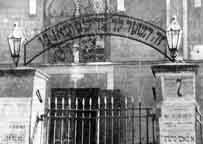 |
|
Searchable
Visual History Archive
The Visual History Archive of
the USC Shoah Foundation is
now searchable for names which
are mentioned in Shoah
interviews. After you
register you can do a search
for Radom and the name of
interest and it will pull up
interviews in which the family
name is mentioned.
Virtual
Shtetl has
added an excellent
history of Radom to its
site.
A
Radom Museum
Did you know
that there is a Radom
Museum, and not in
Radom? Many
former Radomers made
their way to Toronto
where they founded the
Beth Radom Congregation.
In more recent times
they have created a
museum to remember
Jewish life in Radom, to
trace the Radomers'
journey from Poland,
around the globe, and to
memorialize it as a
physical tribute to
their history. They have
sought memorabilia
related to Radom to
develop the
museum. This
is a good time to look
through those old
boxes and share your
Radom related
materials, either
photos or scanned
images. Their
objective is to develop
their website into
a resource for
those of us with
an interest in
Radom around the
world. While
you may never get to
Toronto, you will be
able to access the
museum as a resource.
And if you are in Toronto,
an advance contact
to
its
curator, Allan
Fryman, will
allow you to
visit the museum.
You
can learn more about the
museum,
contact
information
and
its efforts at Beth
Radom Museum.
|
|
|
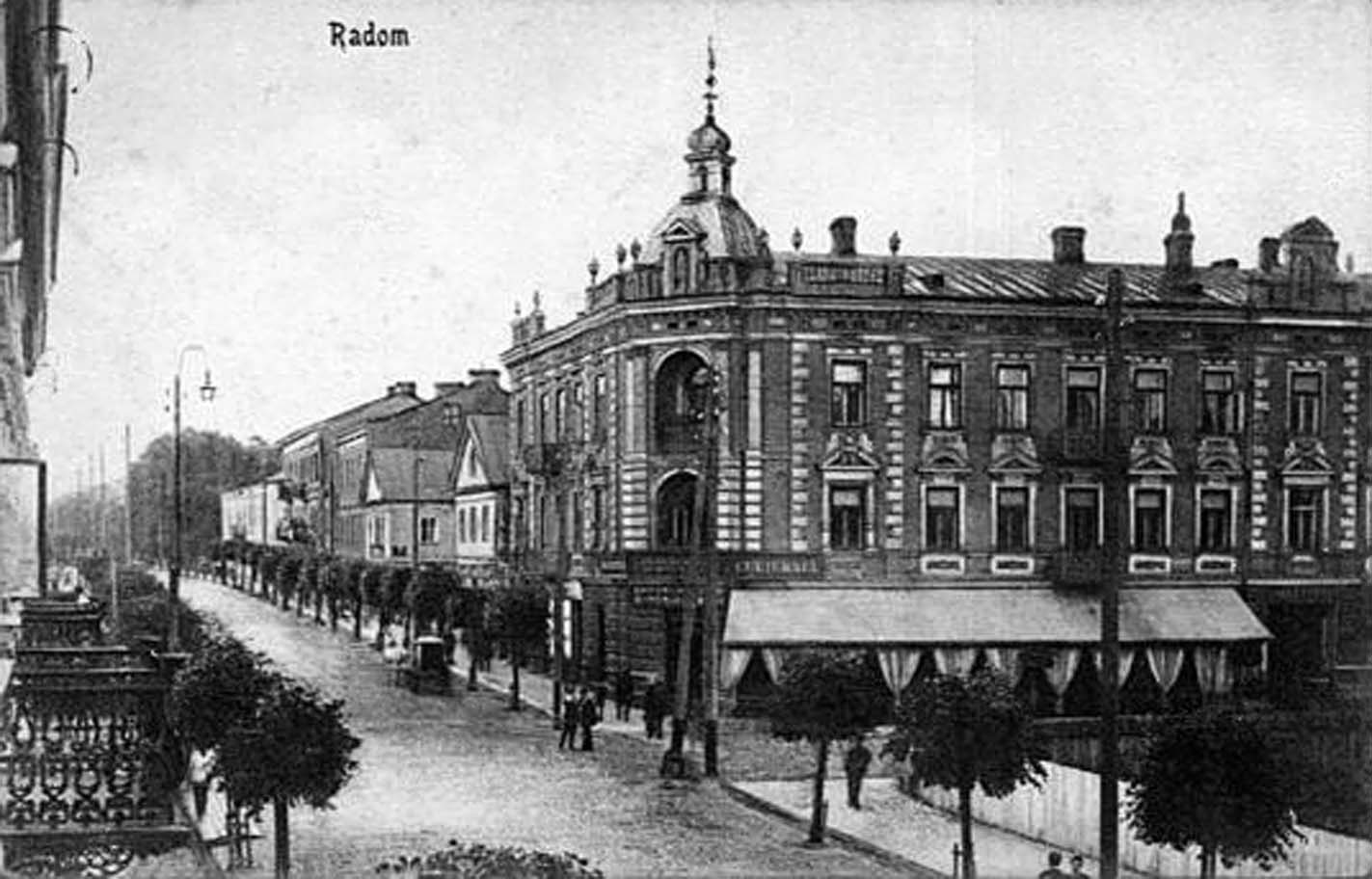
KehilaLinks
This page is
hosted at no cost to the public by Jewishgen, Inc.,
a non-profit corporation. If you
feel there is a benefit to you in
accessing this site, your JewishGen-erosity is appreciated.
What Can I
Find at the Archives?
While in
Radom I found many resources
that I've included on this site.
You will find many of them on
the Names page.
Archives and
Library
If you plan to
do research in Radom, read
Using
the Radom Archives to learn
what is available there.
Even if you don't travel
there, it may help you
in ordering documents.
Names
Research
documents from 1822/23 are
available at the name link
with the patronymics and the
new surnames which were taken.
A list of Jewish
names from 1813 are in a
downloadable excel
spreadsheet, together with
profession. As these are
patronymics, the name they
later assumed is also noted.
Other documents
list out the members of the
synagogue in Radom and
surrounding areas in
1884/86. A list of
surnames of photographs of
former Radom residents is
provided which can be located
through the Jewish Historical
Institute in Warsaw.
A number of links to the
Polish Archives have
been added that include
identity papers
from 1941 and lists of
Jewish
bakeries from
the
1930s.
Don't forget that the Radom
Library also has documents, many of which are
available on-line. On the Names page you will
find links to a book of
property owners from the
early 1900s, telephone
books and directories of
professions from the 1930s
and 1940s.
Pre-War
Radom
Family
Histories
and
Pictures
On
the Family History
tab you will find
recollections of
survivors who lived
in the pre-war
community.
Many who have
written a memoir
have allowed us to
include the first
chapter about their life in
Radom.
On
the pictures
tab you will
see a link to
stills from a
homemade film
of Jewish
Radom done in
1937.
The quality is
poor, but
it
captures the
people and
institutions
of the
community in a
rare pre-war
snapshot.
It is easier
to view via
stills so I
have captured
many of the
images.
My visit in
2011 was on
the occasion
of
exhibiting
my artwork
based on that
film some of
which is found
in the header
of each page.
Accompanying
me was Dora
Zaidenweber, a
survivor who
was 15 years
old when the
war broke
out.
Dora shared
her pre-war
and ghetto
period family
photographs in
the
exhibit.
Her photos had
survived in
the shoes of
her husband
and her
brother who
grabbed photos
and put them
in their shoes
prior to being
sent to the
camps.
|
|
|
|
|
|
|
|
|
|
|
We are very sorry to report that
Professor Zbigniew Wieczorek passed away after
a brief illness on October 25, 2021
Wieczorek was an important figure in fostering
dialogue between Poles and Jews and preserving
the memory of Jewish history in Radom.
You can read more about his work here.
May
his memory be a blessing.
Excerpts from
reflections of from
Hilda Chazanovitz and Sharon
Grosfeld, children of Holocaust
survivors and activists for a new
narrative in Poland
. .In 2009, Sharon traveled on
her own to visit the place of her
father's lost youth. Though finding his
former address, the original building
was replaced by a Communist era high
rise, and there were very few plaques to
identify historically Jewish landmarks.
Hilda’s journey began in 2014 upon the
discovery of the Grynblat home where her
mother lived with her family. Without
any visible signs of Jewish life, echoes
of her family whispered through the
broken walls.
Over the next few years, Hilda and
Sharon visited Radom and began
developing relationships with Radom
teachers and government officials
interested in pursuing the same journey
of reconciliation by honoring, as well
as commemorating, the Jewish community
and culture that once flourished there.
In 2016 they led an interfaith Passover
Seder at the Radom’s community center.
They worked with the Radom government
and colleagues in Radom to mark the 75th
anniversary of the liquidation of the
Radom ghetto through commemorative
ceremonies lasting almost a full
week. Inspired by Professor
Zbigniew Wieczorek and close friends at
the Forum for Dialogue in Warsaw, they
have worked to restore just some of what
was lost.
In addition to many events planned
during the commemoration, together we
all formed an extraordinary relationship
that culminated in the unveiling of
Jewish plaques installed along streets
and on buildings throughout Radom to
ensure local citizens, as well as
visitors do not miss the presence that
once filled the town with Jewish
schools, bakeries, hospitals, a
synagogue, cemetery, and most
importantly, Radom's former Jewish
inhabitants.
Restoring the history of the Jewish
presence within the infrastructure of
Radom’s society, along with the renewed
and present-day ties between Jewish and
Christian Poles, marks both a revival
and regeneration of centuries of
co-existence. Though the Holocaust was a
defining moment that severed those
fragile bonds, the hope for the future
runs through the veins of Jewish
descendants, and Christian residents
alike.
return to top
|
|
|
|
|
|
|
|

